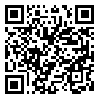Volume 29, Issue 178 (11-2019)
J Mazandaran Univ Med Sci 2019, 29(178): 181-196 |
Back to browse issues page
Download citation:
BibTeX | RIS | EndNote | Medlars | ProCite | Reference Manager | RefWorks
Send citation to:



BibTeX | RIS | EndNote | Medlars | ProCite | Reference Manager | RefWorks
Send citation to:
Davari A, Ahmadkhani F, Jafarzadeh J, Mirzakhani R, Roodgari S, Bagheri S, et al . A New Approach to Virulence Factors of Candida
albicans: From Gene to Function
. J Mazandaran Univ Med Sci 2019; 29 (178) :181-196
URL: http://jmums.mazums.ac.ir/article-1-12798-en.html
URL: http://jmums.mazums.ac.ir/article-1-12798-en.html
Amirhossein Davari 

 , Fardin Ahmadkhani
, Fardin Ahmadkhani 

 , Jalal Jafarzadeh
, Jalal Jafarzadeh 

 , Roghayeh Mirzakhani
, Roghayeh Mirzakhani 

 , Somayeh Roodgari
, Somayeh Roodgari 

 , Soghra Bagheri
, Soghra Bagheri 

 , Mojtaba Nabili
, Mojtaba Nabili 

 , Maryam Moazeni
, Maryam Moazeni 




 , Fardin Ahmadkhani
, Fardin Ahmadkhani 

 , Jalal Jafarzadeh
, Jalal Jafarzadeh 

 , Roghayeh Mirzakhani
, Roghayeh Mirzakhani 

 , Somayeh Roodgari
, Somayeh Roodgari 

 , Soghra Bagheri
, Soghra Bagheri 

 , Mojtaba Nabili
, Mojtaba Nabili 

 , Maryam Moazeni
, Maryam Moazeni 


Abstract: (9231 Views)
Recently, there is an increasing trend in the diversity of pathogenic yeasts isolated from clinical samples. However, Candida albicans is even now the major cause of yeast infections. Candida albicans is one of the members of the mucosal microbiota which can cause cutaneous, mucosal, and disseminated invasive infections in susceptible individuals. For persistence in the host, the yeast must have the ability to adhere to both biotic and abiotic surfaces following host tissue invasion, and obtain iron. One of the important properties of this pathogenic yeast is dimorphism which is its ability to switch from a unicellular to a hyphal mode of growth. Dimorphism is triggered in response to certain environmental conditions, such as pH alternation, temperature, or serum availability. These changes which allow the yeast to invade are associated with the expression of several genes involving in its pathogenesis, including SAP genes family encoding the secreted aspartic proteinases (Saps), the agglutinin-like sequence (ALS) family encoding the adhessive proteins, and phenotypic and morphologic switching systems. This review aimed at summarizing recent data on the regulation and relevant signal transduction of some important essential genes associated with virulence factors in Candid albicans. Surely, understanding the genetic of the virulence factors would be of great benefit in effective combating the yeast and also in designing new antifungal agents.
Send email to the article author
| Rights and permissions | |
 |
This work is licensed under a Creative Commons Attribution-NonCommercial 4.0 International License. |




